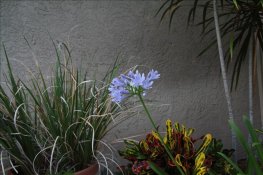I see your point but I disagree with your conclusions: in the second B&W I wasn't metering JUST the central flower, there are more than one flower and I was using a Praktica MTL50 that I assume has a centre weighted lightmeter so it has read also the other subjects and made the average...if it were just the central flower you would have had the same effect as the first shot.
Same thing for the second colour pic, average of more than light flower and I was composing more than subject, my opinion is that in order to obtain your effect you need to have to spotmeter a single bright object on a darker background.
I really don't think you're understanding what my initial post was about.
I don't want a visible background to any degree. You're first image came close, and was similar to some of my test shots, but any high contrast scene will give you those results no matter how you frame, meter, or expose. Your last 3 photos are completely unrelated to what I'm going for, and IMO, by posting those as representations of black backgrounds, really makes me think you were not getting the point of the thread.
If you spot meter any subject that is naturally lighter then the background, you will get a much darker background, only because your meter is bringing what it metered (the lighter colored subject) down to Zone V, which would drop a darker background down into Zones I-IV, so it will of course be much darker then the subject.
What I'm trying to do for example, is take a white background, with a dark foreground subject, and turn the white background black, while exposing for the dark subject properly. Unless I'm mistaken, there is no possible way to do that without artificial light over-powering the ambient light.
In the F1 book at page 17 there is a pic of a white horse in a black forest and it is stated it was possible to obtain that effect (the forest looks at night time but it is not) because they had used the SJ screen(that gives you spot metering, 2 degrees angle) on the highligths of the mane...I think this is the best and professional example of what you are looking for.
In the pdf link you provided above, page 17 is a picture of the camera with parts numbered. No horse, no forest. But I can envision what you're referencing, and of course a white horse in front of a dark forest is going to look like the background is (close to) black. If it was fully black, you wouldn't know it was a forest. That example is a very high contrast scene that will always result in a very dark background, unless the horse is over exposed, or you metered for the forest. That's similar to taking a photo of chalk on a blackboard and saying 'Look, I made the background black'.
Perhaps in the weekend I'll try to other pics like my first one, even if all the cameras I have available don't have a spot lightmeter.
I'm not using a spot meter to do this. It's not about spot metered subjects, it's about over powering the ambient light with artificial light. That's what makes the background disappear, not under exposing the whole image to bring the subject to Zone V, and let the background fall where it may, which is what will happen without artificial light.









